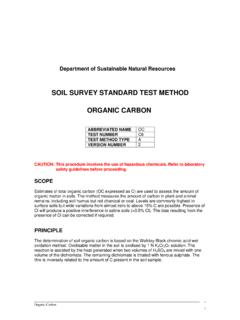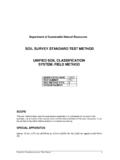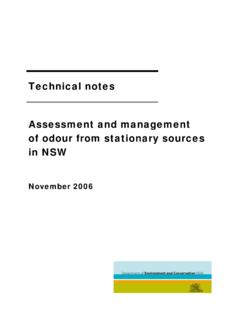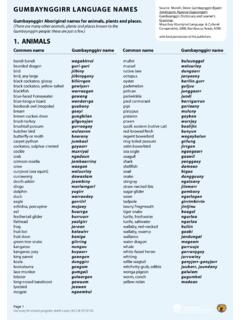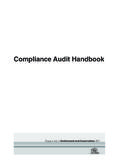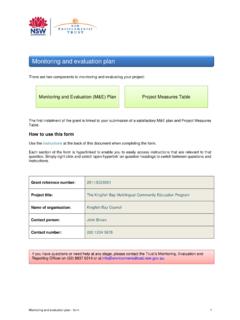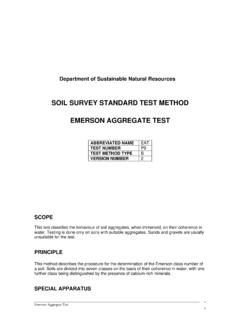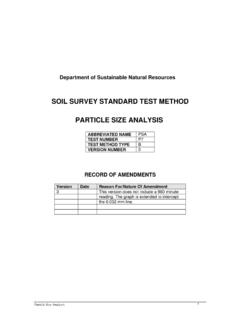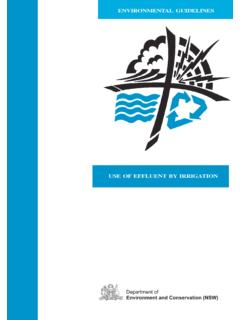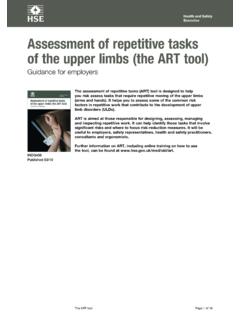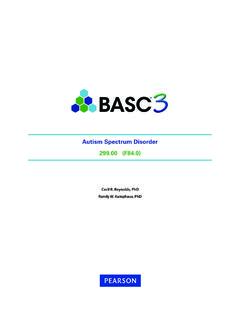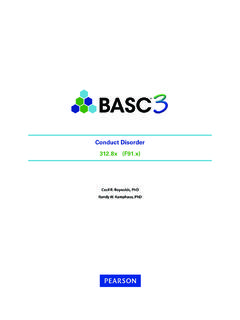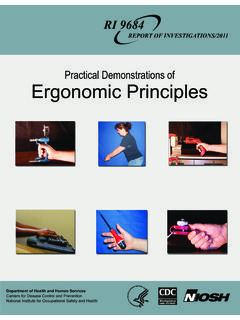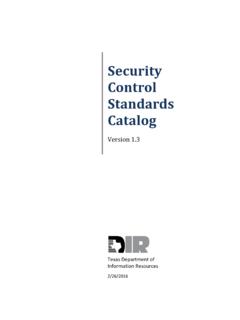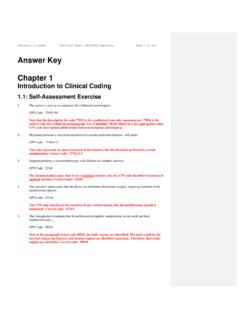Transcription of Assessing vibration: a technical guideline
1 Assessing vibration: a technical guidelineFebruary 2006 Published by: Department of Environment and Conservation 59 61 Goulburn Street Sydney NSW 2000 PO Box A290 Sydney South NSW 1232 phone: (02) 9995 5000 (switchboard) phone: 131 555 (information and publications requests) TTY: (02) 9211 4723 fax: (02) 9995 5999email: website: 1 74137 812 5 DEC 2006/43 February 2006 All text, photos and figures Department of Environment and Conservation (NSW) 2006, except where noted cover shows a selection of vibration sources: [clockwise from top left] locomotive (photo: J Goodwin/DEC), hydraulic hammer (courtesy Caterpillar), brake press (courtesy Nepean Engineering, photo: T King/DEC), pile driver (courtesy Macdonald Sheet Piling).
2 Permission to reproduce extracts from the BS 6472: 1992 in this document granted by BSI. British Standards can be obtained from:BSI Customer Services 389 Chiswick High Road London UK W4 4AL phone: +44 (0)20 8996 9001 email: Figure reproduced by courtesy of Lexis Nexis work is copyright. Apart from any use as permitted under the Copyright Act 1968, no part may be reproduced without prior written permission from DEC. Every effort has been made to ensure that information in this guide is accurate at the time of printing. DEC cannot accept responsibility for any errors or on recycled paperFor technical information about this report, please contact:Noise Policy Section Policy and Science Division Department of Environment and Conservation (NSW) phone: (02) 9995 5000 Copies of this document and other DEC publications about noise management may be found at: Assessing vibration: a technical guidelineiii Executive summary.
3 V1 Introduction .. Overview .. Development of the guideline .. Additional features to the approach .. When this guideline should be used and who should use it .. 22 Vibration criteria .. Types of vibration .. Application of the criteria .. Acceptable values for continuous vibration and impulsive vibration (1 80 Hz) .. Acceptable values for intermittent vibration .. Short-term works .. 83 Mitigation .. Introduction .. Controlling vibration at the 10 Controlling the transmission of vibration .. 12 Controlling vibration at the receiver .. 12 Managing short-term exceedance of approved vibration values.
4 Negotiation .. 134 Vibration measurement and prediction .. Units of measurement .. Location and direction of vibration measurement .. Measurement instrumentation and techniques .. Mounting of vibration transducers on buildings .. Mounting of vibration transducers on the ground .. Prediction .. Information provided in a vibration assessment report .. 16 References and bibliography .. 17 Appendix A: Screening 19 Appendix B: BS 6472 weightings .. 20 Appendix C: Vibration criteria presented in different units .. 26 Appendix D: History of vibration criteria .. 27 Glossary .. 29 ContentsAssessing vibration: a technical guidelinevExecutive summaryAssessing vibration: a technical guideline is based on guidelines contained in BS 6472 1992, Evaluation of human exposure to vibration in buildings (1 80 Hz).
5 BS 6472 (current and former versions) has guided the Department of Environment and Conservation s (DEC) evaluation of vibration since the mid-1980s. Thus, this technical guideline does not represent a change in policy guideline presents preferred and maximum vibration values for use in Assessing human responses to vibration and provides recommendations for measurement and evaluation techniques. It does not address motion sickness, occupational vibration, blasting vibration effects or vibration-induced damage to buildings or 1 provides information on how the guideline was developed, what extra features have been included since the previous guideline (Environmental noise control manual, Chapter 174) and who the guideline is 2 provides preferred and maximum values for continuous, impulsive and intermittent vibration.
6 Intermittent vibration is assessed using the vibration dose concept which relates vibration magnitude to exposure time. Relevant multiplying factors are used to derive acceptable magnitudes of vibration on the basis of the receiver type and the nature of the criteria are non-mandatory: they are goals that should be sought to be achieved through the application of all feasible and reasonable mitigation measures. Where all feasible and reasonable measures have been applied and vibration values are still beyond the maximum value, the operator would need to negotiate directly with the affected guideline presents vibration criteria that use the parameter of acceleration root mean square (rms), measured in metres per second per second (m/s2 ).
7 Criteria are also presented in velocity rms in the assessment of vibration requires the use of an overall frequency-weighted value for each axis (x, y and z directions). This overall value is assessed against the preferred value for the relevant axis. An alternative to using frequency-weighted values is presented as a simplified screening technique in Appendix predicted or measured vibration values exceed the preferred values, then mitigation measures to meet the preferred values should be considered. The degree of vibration impact quantifies the extent of mitigation required and the mix of vibration control measures to be adopted as a mitigation strategy.
8 Section 3 provides generic information on mitigation measures to reduce vibration effects induced by various activities, but these are not prescribed measures. This section of the guideline is not meant to be exhaustive or to replace the need for specialist advice. Where the preferred values cannot be met, alternative management approaches are 4 provides information on measurement and prediction vibration: a technical OverviewWhere occupants can detect vibration in buildings, this may potentially impact on their quality of life or working efficiency. In contrast, people tolerate much higher vibration values in vehicles than in of vibration covered in this guideline include construction and excavation equipment, rail and road traffic, and industrial machinery.
9 Low-frequency, airborne pressure waves emitted by some heavy vehicles, aircraft and machinery can also cause vibration in buildings. Some vibration sources give rise to audible effects such as structure-borne noise and secondary rattling of building elements or can detect building vibration values that are well below those that can cause any risk of damage to the building or its contents. The level of vibration that affects amenity is lower than that associated with building keeping with its charter to protect the health and wellbeing of the community, DEC has developed this guideline to aid in protecting people from values of vibration above preferred and maximum values felt inside buildings.
10 This guideline describes:the characteristics of vibration and associated effects that can cause community disturbance and concern to people, in particular, the occupants of buildingscriteria defining values of vibration to protect amenityprocedures for the measurement and evaluation of vibration values and other associated guideline presents preferred and maximum vibration values and provides recommendations for measurement and evaluation techniques. It does not provide information on the motion sickness effects of low-frequency vibration ( below 1 Hz, usually encountered only in some forms of transportation) or occupational vibration within any workplace, which are separate issues administered by the WorkCover Authority under the Occupational Health and Safety Act 2000.
